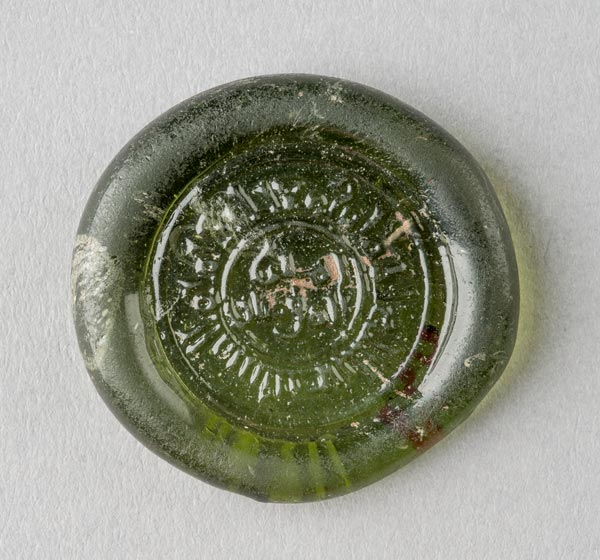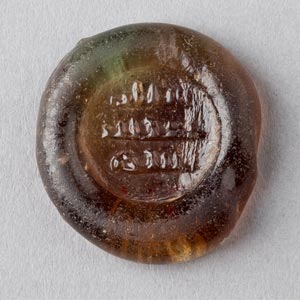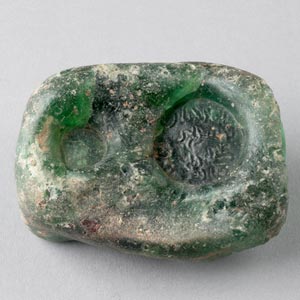Coin Weight
The Show

Coin weight 10th–12th centuries, Egypt Green glass Kelsey Museum of Archaeology, 91244
Glass weights were made by impressing an inscribed stamp into a measured globule of glass while it was still in a semi-liquid state. Emulating the layout of some metal coins, this weight's text is arranged in concentric rings. Glass weights came in many sizes and denominations. They were regulated and used in medieval Egypt to measure many different items, from grains and olive oil to coins. Metal coins varied in weight and did not always contain pure gold and silver. For these reasons, in market transactions the weight of precious metal coins would be measured on a balance against glass coins in order to determine a correct sum of money. Glass weights were thus not used as currency but as a means to weigh metal coins accurately. Moreover, their common use in commercial affairs is recorded in medieval letters written by merchants who used the Arabic verb "to weigh" (wazana) as a synonym for "to pay."
Bibliography: Miles 1951a; Morton 1985; Bates 1993; 1981; and Balog 1981.
Return to the Show


